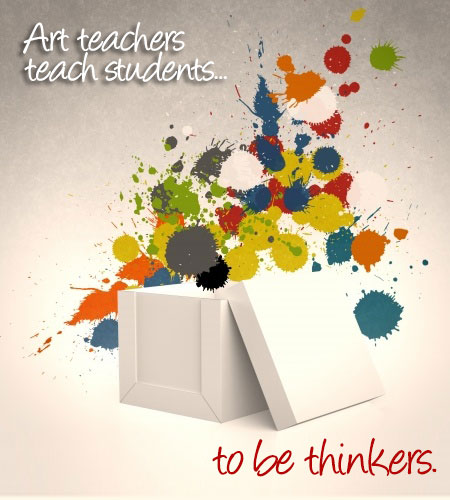Blog 22:
Ideal teaching situation:
An ideal teaching situation would include a well rounded, sharing, successful mentor who is willing to show me the "ropes". I think that in the first couple of years having a good mentor at your side will make all the difference. Well funded art program, smaller teacher to student ratio, and up to date facilities would allow for a ideal teaching situation.

Things that will allow me to be successful art teacher are organization, classroom discipline, communication, and assessments. This will include materials, storage, lesson plans, and sample projects.Figuring out who and what my resources are will come with time, but will help with my success. I believe in teaching students how to make the right choices when it comes to discipline and their behavior. I don't believe in "punishment", but in learning experiences. Logical consequences that teach students how to self-discipline is my goal.
Good Art Teacher: 8 Methods of Effective Teaching
As a result of recent brain research and data, various educational institutions and researchers have come up with a list of "best practices" for a good art teacher.
Lanlois and Zales (1992) identified eight proven methods of effective teaching:
- High expectations of student achievement
- Course methods and routines that are clear to the teacher and student
- Varied and appropriate teaching method and materials
- A supportive, cooperative atmosphere
- Enthusiasm, energy, caring, and maintenance of a nonthreatening atmosphere
- A manifest belief that their subject is important
- Relates instruction to student interests
- Content expertise
Best Practices: 7 Principles of Effective Education
Chickering and Gamson (1987) identified seven research-based principles of effective education.
- Encourages contacts between students and art teachers
- Developed reciprocity and cooperation among students
- Uses active learning techniques.
- Provides prompt feedback
- Emphasizes time on task
- Communicates high Expectations
- Respects diverse talents and ways of learning
All the above will help increase student achievement in my course. It s a cause and effect system. I will continue to grow and learn from other professionals, my fellow art teachers, the art community, my continuing education in graduate school, art course, volunteer work & the community, my student, parents, and any other out let or experiences I can find. I have spent my whole life seeking new experiences and knowledge and this is a new and wonderful step along the way.

No comments:
Post a Comment